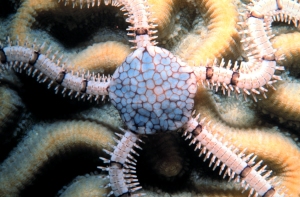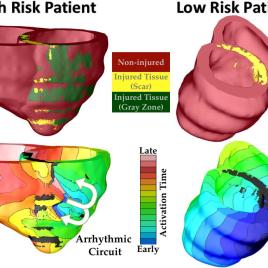
Ophiuroidea (brittle stars), a dominant component of seafloor fauna (Image via Wikimedia Commons)
The diversity of life in the deep ocean is driven by the availability of food and not the temperature, as it is in shallower waters. Understanding biodiversity in the deep sea becomes increasingly important as species on the seafloor face pressure from deep-sea fishing and mining. A team of researchers from Canada and Australia analysed the global distribution of 2,099 species of brittle and basket stars using data from over a thousand research expeditions. They compared patterns of biodiversity across three ocean depths: the continental shelf, the upper continental slope, and the deep-sea.
The researchers found more variety of life as the availability of food increased. Greater diversity was also observed at the continental margin, where the continent meets the ocean floor. The researchers believe this analysis provides them with a baseline for future conservation efforts on the seafloor.
Authors:
Skipton N. C. Woolley, Derek P. Tittensor, Piers K. Dunstan, Gurutzeta Guillera-Arroita, José J. Lahoz-Monfort, Brendan A. Wintle, Boris Worm & Timothy D. O’Hara
Corresponding author:
Skipton N. C. Woolley
Canadian contributors:
Derek P. Tittensor and Boris Worm, Department of Biology, Dalhousie University, Halifax, Nova Scotia
Original paper published on May 11, 2016 in Nature.


